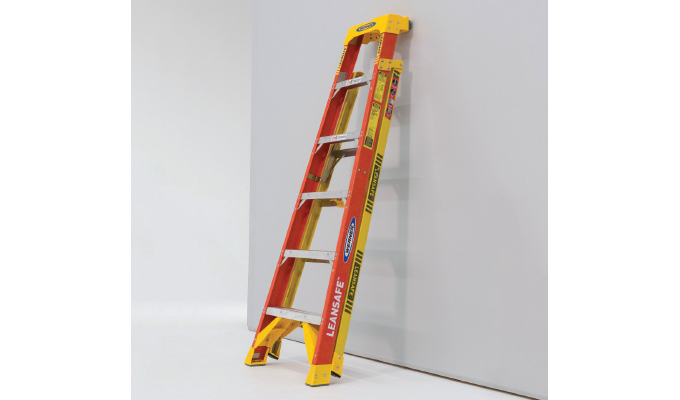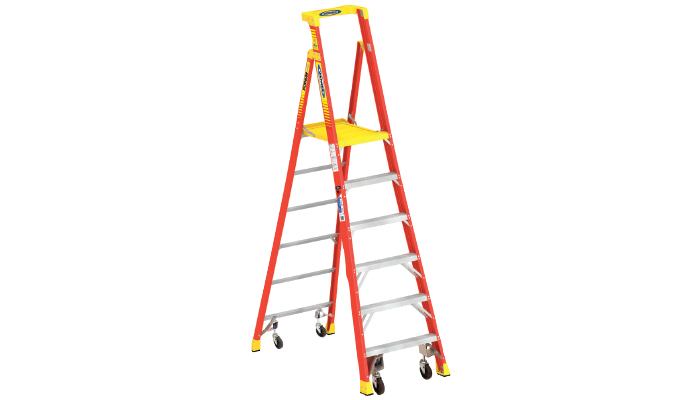By Brian Kagen
Since January 1, 2017, OSHA has closed more than 90 Federal and State investigations into workplace fatalities relating to ladder use, primarily from falls and ladder-related electrical accidents.1 Every week, this number increases. The American Ladder Institute (ALI) suggests that more than 300 ladder deaths occur every year2, while the Consumer Product Safety Commission estimates that over 260,000 ladder injuries occurred in 2017 that required hospital treatment.3
This shocking number of injuries and fatalities on American worksites is nothing new, which is why the ALI, a not-for-profit association dedicated to promoting safe ladder use, created National Ladder Safety Month. March was established as an awareness campaign to draw attention to the importance of ladder safety. Its goals include decreasing the number of ladder-related injuries and fatalities, increasing the number of in-person ladder trainings, and increasing the number of companies that inspect and properly dispose of old and damaged ladders.
This year is the third annual National Ladder Safety Month, which spanned from February 24 to March 30, 2019. It garnered significant industry support and recognition, with 75 percent of ladder manufacturers participating in 2018.4 This year, National Ladder Safety Month featured unique programming focusing on five key themes: ladder safety, ladder safety training and year-round partners of the ALI, ladder safety at work, ladder safety at home, and ladder inspection and disposal.
LADDER SAFETY TRAININGS
As both OSHA and ALI continue to highlight the need for enhanced ladder safety, employers and jobsite leaders are implementing more safety trainings for their employees. In fact, ALI reports that 95 percent of surveyed ladder users participated in some form of ladder safety trainings, either online or on the jobsite by a trained safety professional.5
ALI provides free online ladder safety trainings both for workers and for those who lead training sessions, helping individuals to brush up on the safety information they need. Werner Ladder, a key manufacturing partner and leader in the category, also provides free online ladder safety trainings to cover general ladder safety practices and ladder-specific guidelines, along with hundreds of on-site ladder safety and fall protection safety trainings each year. This year, during Ladder Safety Month, Werner placed a special emphasis on deploying its online classes and end-user specialist team of 40 experts to jobsites across the country, demonstrating safety tips for both ladders and fall protection systems targeting over 1,000 professionals.

Ladder safety trainings have tangible benefits for a workplace. Ensuring that everyone on-site is educated, and that jobsite leaders know how to look for safety violations, is likely to reduce the number of injuries and potentially even preventable fatalities. ALI notes that 76 percent of companies believe ladder accidents occurred in their workplace could have been avoided with ladder safety training.6 When employees are confident in safety protocols, they can both practice them and help others on the jobsite adhere to proper ladder safety.
What’s more, professionals can eliminate potentially thousands of dollars in OSHA penalties for noncompliance during inspections. A maximum OSHA penalty for safety noncompliance costs employers more than $13,000 per violation, with a penalty of about $132,000 for a willful or repeated violation.7 Developers, general contractors, and subcontractors can even be legally charged with jail time for injuries or fatalities that occur on the jobsite, especially if there is evidence that safety protocols and trainings were never implemented. Ensuring safety standards are strictly adhered to doesn’t just protect the lives of workers, but it also protects the companies managing the project and their ability to create jobs.
SAFETY ON THE JOBSITE
A major goal of bringing awareness to ladder safety is to prevent injuries that are often entirely avoidable with baseline education about best ladder use practices. For example, it is recommended that individuals maintain three points of contact when climbing a ladder, always face their body towards the ladder when climbing, and move materials with extreme caution when standing on a ladder. Practicing these basics of ladder safety every day can vastly reduce the chance of injury.
Professionals can further practice ladder safety by choosing the correct type of ladder for the job at hand. For example, fiberglass ladders should be used over aluminum or wooden ladders when working with electricity, because fiberglass is a non-conductive material that offers added protection from electrical shocks. Selecting the correct ladder style is also a consideration. Users can choose between A-frame ladders, stairway ladders and leaning ladders, among other types, to provide the necessary support for their body weight, location, and reach height.
SAFETY-ENHANCED PRODUCTS
Just as jobsites are placing a stronger emphasis on ladder safety in 2019, manufacturers are working to ensure ladder designs are safer than ever by integrating safety elements into new product designs. As slips and falls are common, slip-resistant treads on climbing steps and large foot pads on platform steps are common features in modern ladders. To combat the possibility of imbalance on a ladder, certain models such as the Werner Podium Ladder series feature an extra-wide platform step and guardrail to provide users with both a greater range of motion and a point of secure contact when standing at or near the top of the ladder. Ladder levelers, like the Werner LeveLok, can be utilized to ensure that professionals never need to set up their ladder on uneven ground; these devices attach to the feet of a ladder and help provide an evenly supported working surface. Users can also choose specialized types of ladders, such as the Werner LEANSAFE® Ladder Series, to provide stability when leaning against varying surfaces like wall corners, poles, and studs. By pairing secure and safety-oriented ladders with best ladder practices on the jobsite, individuals can curb ladder-related injuries.
LADDER SAFETY AND THE FUTURE
As National Ladder Safety Month draws attention to the number of professionals who experience injuries and even fatalities associated with ladder use, more and more employers across the country are prioritizing safe ladder practices on the
About the author:
Brian Kagen is a seasoned executive with more than 20 years of experience on the global scale leading iconic consumer and industrial brands and businesses. He brings a wealth of knowledge to the WernerCo team in his role as senior vice president of marketing & product development—North America, including proven successes driving P&L performance. For more information on Werner Ladder’s safety training, visit www.wernerco.com/safety.
Modern Contractor Solutions, April 2019
Did you enjoy this article?
Subscribe to the FREE Digital Edition of Modern Contractor Solutions magazine.

1www.osha.gov/dep/fatcat/dep_fatcat.html – By typing “ladder” into the “Hazard Description” column of OSHA’s chart, you can see the 90+ investigation listings relating to ladder injuries and fatalities.
2www.laddersafetymonth.com/Portals/0/NLSM%202019/FINAL.pdf
3www.cpsc.gov/s3fs-public/2017-Neiss-data-highlights.pdf?3i3POG9cN.rIyu2ggrsUkD1XU_zoiFRP
4www.laddersafetymonth.com/Portals/0/NLSM%202019/FINAL.pdf
5www.americanladderinstitute.org/page/SurveyResults?&hhsearchterms=%22survey%22
6www.americanladderinstitute.org/page/SurveyResults?&hhsearchterms=%22survey%22


